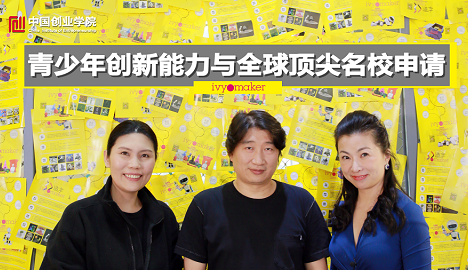
当前课程知识点:Shadow Play—Seeking the Lost Shadow of China(皮影戏) > Course questions > Course questions > 3.3.Shadow play in southern China
返回《Shadow Play—Seeking the Lost Shadow of China(皮影戏)》慕课在线视频课程列表
返回《Shadow Play—Seeking the Lost Shadow of China(皮影戏)》慕课在线视频列表
Episode 3: Southern Characteristic Shadow Show
Hunan paper shadow show
Hunan shadow show has a long history,
and most of its shadow puppets are “paper puppets”.
It is a kind of shadow play performed with paper puppets.
The production of its puppets absorbs the essence of various folk arts such as paper-cutting, painting, and carving,
presenting rich carving methods,
a combination of virtuality and reality,
a reflection of simplicity and complexity,
beautiful appearances and vivid structures.
The climate in Hunan is humid,
and hard materials must be used to produce the shadow puppets,
otherwise the shadow puppets will bend or deform as the moisture in the air continues to penetrate.
Therefore, traditional Hunan shadow puppets are mostly made of cardboard or hard cowhide through five steps of leather making,
swatching, carving, coloring, flattening and embossing.
Changsha shadow puppets are always unique in structure.
Different colors are usually used as the keynote to shape character images.
The singing tune integrates the characteristics of Hunan opera and Huagu opera,
and its plots are from folk stories and legends.
The shadow puppets in the north generally present 50% face while the shadow puppets in Changsha show 70% faces.
The so-called 70% faces expose two eyes while 50% faces just expose the side.
Several decades ago, Changsha shadow show has over one thousand chapters,
but there are only over three hundred chapters left up to now.
In the past, when there were shadow shows,
many elderly people were leaning on crutches and were supported by younger generations at home to watch the show.
When the shadow show is the most prosperous,
shadow artists perform outside for more than 320 days in one year,
and sometimes they may perform two or three shows a day.
Now, we will enjoy the Hunan shadow show Yue Fei Defeats Jin Army performed by Hunan Xiangtan Shengpingxuan Paper Shadow Show Group.
Paper shadow show Yue Fei Defeats Jin Army
General story:
It tells the heroic story of Yue Fei,
a famous general of the Song Dynasty,
who went into battle when he received the report of the invasion of the Jin Army,
took the lead to defeat the Jin Army,
and defended the state.
Jianghan Pingyuan Shadow Show
Jianghan Pingyuan Shadow Show has already had a history of over 300 years up to now.
It refers to the shadow show with the same art characteristics popular in Mianyang(Xiantao City now),
Tianmen, Qianjiang, Jianli, Honghu, Jingshan, Gong’an and other counties(cities) in south central Hubei.
Jianghan Pingyuan Shadow Show is the “local film” of Jianghan people,
and it is deeply loved by the public.
There is a song “watch the cow leather, stay overnight,
go back home late at night,
make the wife angry” in Mianyang,
presenting the great attraction of the shadow show.
There is a unique singing tune in Tianmen, Hubei,
which is called “Yugu tune”.
Yugu is the drum made of the leather and bamboo bucket.
The performer sings while playing the drum.
It is exactly Yugu song.
Mianyang Yugu tune is divided into Ping tune, Bei tune,
Yuwei tune(or Fengwei tune),
pipa tune, and Zahua tune.
The performer uses the real and false voices,
presenting great scale jump, wide range,
beautiful, high and mild tone.
The music conveys emotions and affections vividly.
Mianyang Yugu was renamed as “Hubei Yugu” in 1958.
It is popular in Xiantao, Qianjiang,
Tianmen and other counties in Jianghan Plain.
The male and female sad tune in Mianyang shadow show is similar to the crying of the plain women in Jianghan district and sad tune of the Huagu Opera.
The sound is sad and miserable,
making people cry into tears,
especially the “doubaofu” in each ending(named as “kouzi” by the artist),
which is the “vocal accompaniment” of a group of accompanying players(exactly “shuai tune”).
They use the padding syllables such as “ai, hai, ya, yo” to extend the phrase and music meanings,
expand the music structure,
which goes up and down, presents vigorous momentum,
clear and fast rhythm and pleasant music in tens or dozens of syllables.
Let’s enjoy the aria of the classical shadow show Shuangjinzhong performed by Hubei Xiantao Jianghan Shadow Show Group.
Shadow show Shuangjinzhong
General story:
In the Zhou Dynasty of China,
the emperor was imbecile and brutal,
and he wanted to kill the empress dowager.
When the brothers Li Guang and Li Wen saw this, they persuaded the emperor.
After presenting no avail,
the two decided to return home and killed their own wife,
so as to exchange the empress dowager from prison.
The two felt that they couldn't bear to kill their own wives,
so they decided to “change the knife to kill the wife”.
When Li Wen went back home, he felt rather hardhearted to kill his wife.
However, when his wife knew that her husband was going to kill her,
she was overwhelmed with sorrow.
The player adopts the “crying tune” to show the farewell,
tearful complaining,
and extremely sadness of the couple.
The entire shadow show presents beautiful and touching tune,
which is rather representative.
-1.1.The origin and the development of shadow play
-1.2.The spreading and the refulgence of shadow play
-1.3.The artistic form of shadow play
-1.4.Shadow player: the characters in shadow play
-1.5.Shadow play characters and their head parts
-1.6.Decoration and environment props in shadow play
-1.7.The singing tune in shadow play
-2.1.Introducing shadow play workshop
-3.1.Shadow play in northern China
-3.2.Shadow play in western China
-3.3.Shadow play in southern China
-3.4.Shadow play in Yunmeng county of Hubei province
-3.6.Shadow play in Central China
-5.1.Character design 1: Handsome Sheng characters
-5.2.Character design 2: Brawny Sheng characters
-5.3.Character design 3: Cartoonic Sheng characters
-6.1.Character design 4: Elegant Dan characters
-6.2.Character design 5: Gorgeous Dan characters
-6.3.Character design 6: Charming Dan characters
-7.1.Character design 7: Domineering Jing characters
-7.2.Character design 8: Reckless Jing characters
-7.3.Character design 9: Crude Jing characters
-8.1.Character design 10: Funny Chou characters
-8.2.Character design 11: Shrewish Chou characters
-8.3.Character design 12: Chou characters in contemporary context
-Course questions

